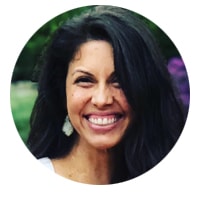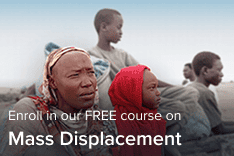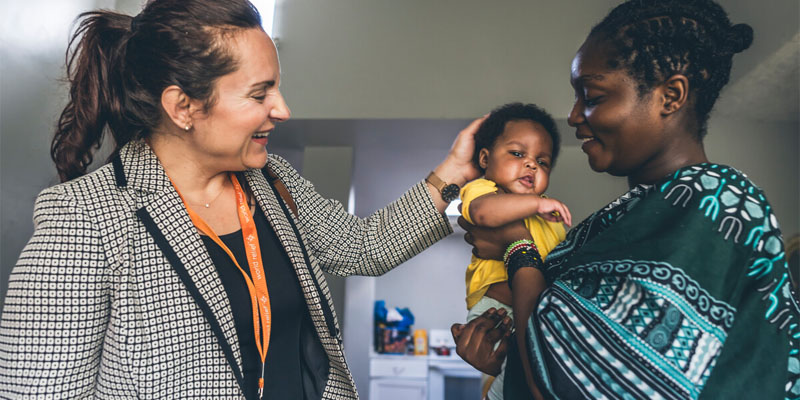As we round the corner of 2020 toward the end of the year, we’re bringing you more made-for-change stories from across the World Relief community.
Today, Amberle Brown, World Relief’s MEL Advisor and Disability Inclusion Focal Point at World Relief, shares her story of living with a disability and how God is using her experience to bring disability inclusion training to World Relief’s global programs. Amberle’s story reminds us that change hopes because God is faithful.
A Lost Dream
The warm breeze carried the voices of the practicing church choir through the window of our office. I was sitting in a circle with a dozen of my colleagues in Burundi, discussing our plans to reach people with disabilities with the health, child development and economic development programming in our nearby Church Empowerment Zone. This was the life I had hoped for since I was a child, but I had no idea of the hopelessness I would have to endure to get here.
When I was seven, I told my parents (to their horror) that I wanted to be a martyr when I grew up. Eventually, I toned that down and declared that I wanted to be a missionary when I grew up. From that young age, all the decisions I made were centered on my goal of becoming a missionary: I became a nurse as an avenue to serve in closed countries, I spent summers abroad, I even refused to date boys who didn’t also want to be missionaries.
But a few weeks after I turned 21, I was admitted to a burn ICU for toxic epidermal necrolysis (TENS) – an extremely rare allergic reaction that affects 1 in 2.5 million people – and kills one in three who have it. There is no established treatment for TENS – doctors must sit by as the patient’s body attacks itself, causing skin and organs to lose their linings like a burn.
Over the next month, I lost 95% of my skin and the lining of organs including my lungs and eyes. As my flesh melted away, so did my hopes of being a missionary in a remote part of the world. By God’s grace, I hardly remember any of that month, as a machine forced air into my decaying lungs and artificial bandages served as the barrier between me and the world. When I left the hospital, my eyes were severely scarred, making the world a blur.
And though I could see people like shadows, I was left with a much deeper pain – a pain of not understanding why God would give me a dream and then take away what I felt was my ability to fulfill that dream as I envisioned it.
Pieces of Hope
As I learned how to live with a disability, I also discovered more about the global situation of people with disabilities: Around the world, people with disabilities are twice as likely to live in poverty; they are more likely to be hungry, have poor health, lack education and be victims of violence; and only 5% of the 1 billion people with disabilities in the world have ever heard the gospel.
And yet, because of physical, communication and attitudinal barriers, people with disabilities are far more likely to be left out of the very efforts intended to foster their thriving.
But in these seemingly hopeless discoveries, God began to restore broken pieces of my hope. For the first time I noticed a Jesus who stopped in his tracks for people with disabilities over and over in the gospels. I learned that my vision loss in fact made it easier for me to rely on God rather than my independence. And I found that my disability itself allowed me to notice and break down barriers that most of us overlook.
My experience with disability propelled me and my team to look more closely at World Relief’s efforts to tackle the world’s biggest problems, to assess and dismantle barriers that might have kept people with disabilities from benefiting from our programs, and to partner with pastors to address harmful beliefs and stigma about disability in the countries where we work.
Bringing Hope to Others
Over the past 18 months, Disability Inclusion (DI) has become integral to World Relief’s mission and strategy. Early emphasis in this work has been focused on understanding the contexts where we work, preparing DI tools and equipping staff to begin DI integration in programs.
In total, we’ve engaged more than 3,400 individuals around DI issues, helping change their perspectives and beliefs about people with disabilities, and guiding them on the journey to understand, identify, serve and treat people with disabilities as men and women made in the image of God.
This work has been piloted across several of our programs in Burundi and Malawi, where 693 local leaders have been reached with DI messaging. Our Parenting for Life couple facilitators have also been taught to better understand the unique needs and constraints that parents of children with disabilities face.
Likewise, 1,966 parents (754 in Burundi and 1,212 in Malawi) have been introduced to a new way of thinking around disabilities, helping them change the way they interact with and treat their children, especially those with disabilities. Many have shifted their mindset as a result of these programs; while they might have previously thought that having a disabled child is a curse from God, they now know to celebrate and support children with differing needs and abilities.
Finally, DI is beginning to inform projects on the ground, the decision-making process, and how we meet the needs of our beneficiaries. In Malawi, for example, a project team focused on improving sanitation conditions within schools worked with children with disabilities in the design of latrines to ensure these facilities would be disability-friendly. These are just a few of the exciting initiatives that are beginning to take shape across our international programming.
Today, I thank God for my disability. I thank God that in my vision loss he has given me a new vision for a world where people with disabilities are embraced by the Church, included in development efforts, and valued by their communities. The winds of hope have come over me afresh. I see redemption coming both in my own life, and in the lives of 1 billion other people with disabilities because real Hope is not based on what we see, but on what we don’t yet see.
“For we were saved in hope, but hope that is seen is not hope. For who hopes for that which he sees? But if we hope for that which we don’t see, we wait for it with patience.” Romans 8:24-25
When you give to World Relief, you support programs and initiatives like our Disability Inclusion work in Malawi and Burundi. Join us in bringing transformation to the world’s most vulnerable.

Amberle Brown is the monitoring, evaluation, and learning advisor for WR’s USAID-funded community-based RMNCH work and World Relief’s Disability Inclusion Point Person. Her personal experience with vision loss sparked her passion for disability inclusion, which has led her to work with World Relief to promote disability inclusion across all program sectors and to co-found The Banquet Network, an organization that equips churches to include people with disabilities. Amberle holds an MSN and MPH from Johns Hopkins University and a BSN from Texas Christian University.


